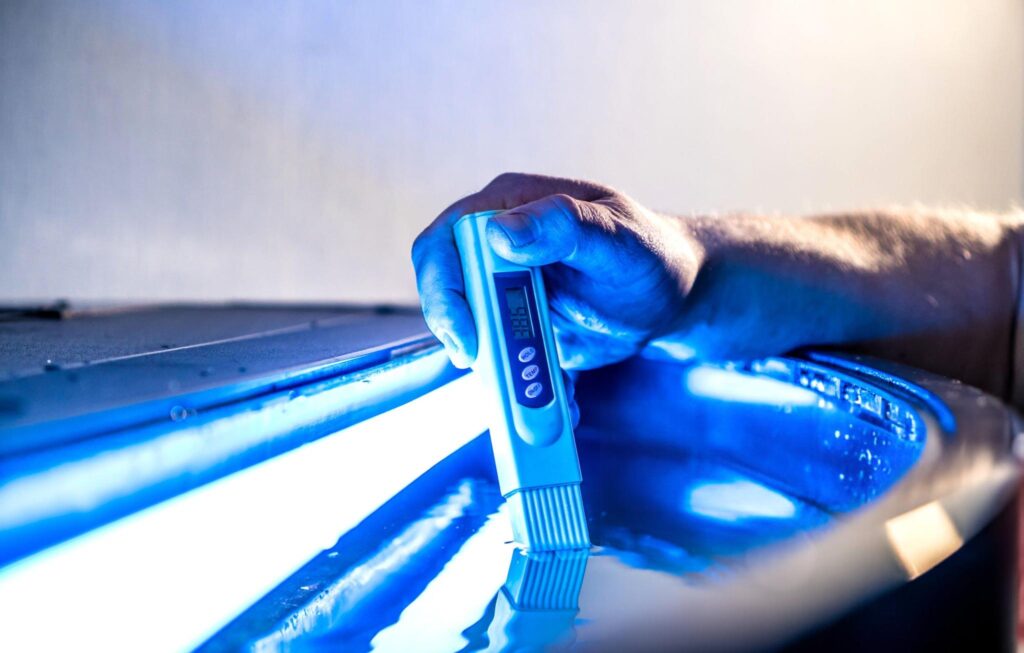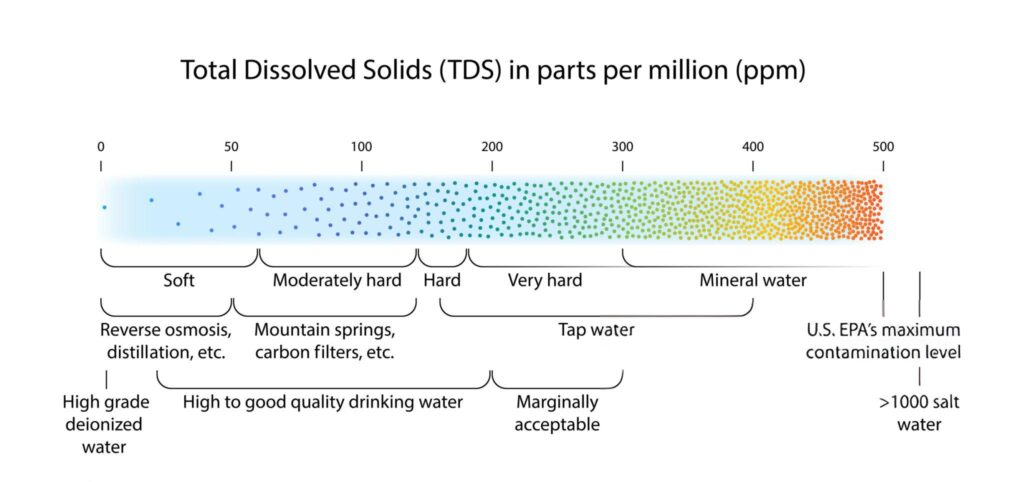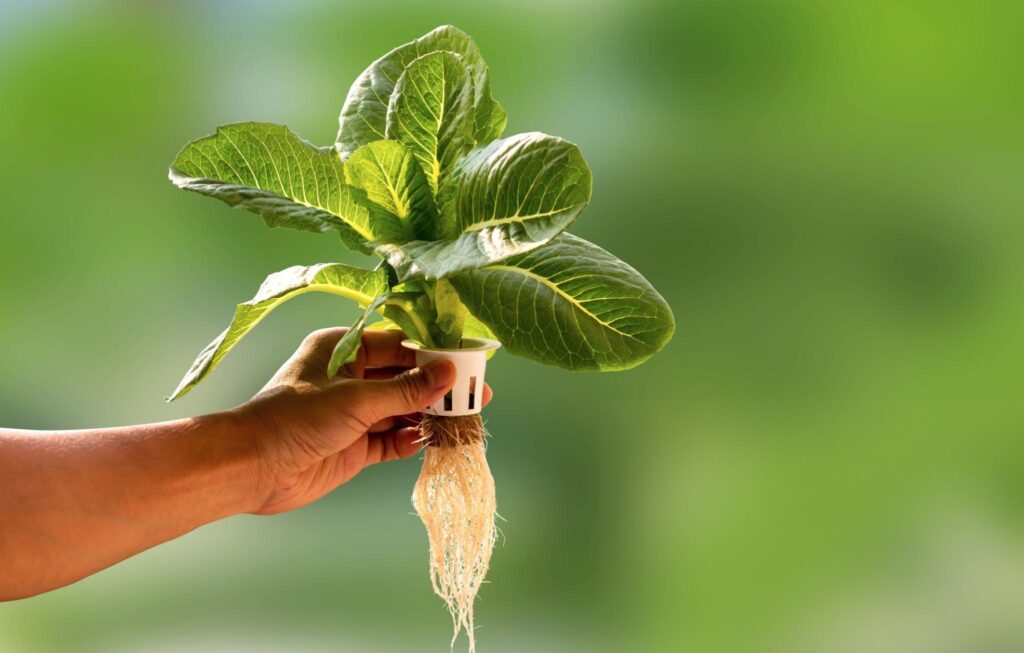Understanding the Role of an EC Meter in Hydroponics
If you’re just jumping into hydroponics, you’re probably know enough to understand that the nutrient balance in your garden is crucial. An EC meter is an indispensable tool for taking measurements of your nutrient solution concentration.
An EC meter, which stands for electrical conductivity meter, is a crucial tool in any hydroponic garden. It measures the ability of a nutrient solution to conduct electricity, which is directly related to the amount of nutrients—such as salts and minerals—present.

By using EC meters for hydroponics, gardeners can effectively monitor and adjust the nutrient concentration to ensure optimal conditions for plant growth.
Electrical conductivity is an important factor because it provides an insight into the nutrient levels within a hydroponic system. In practice, the higher the EC value, the greater the concentration of dissolved solids in your nutrient solution.
With a nutrient meter, growers can ensure the nutrient solution does not swing towards being too diluted or too concentrated, avoiding potential plant health issues.
Almost all nutrients conduct electricity, so EC measures most things that a plant absorbs, and that means it’s perfect for hydroponics. An EC meter is often considered synonymous with PPM and TDS meters, which estimate Total Dissolved Solids by using a conversion formula to calculate the estimated TDS.
EC meters are considered more accurate and reliable gauge of your nutrient solution’s effectiveness because there is a single industry standard for the range of EC numbers.
On the other hand, PPM and TDS estimates can be represented by a number produced by a conversion factor, also known as a scale. So you need to be really careful when using numbers denoted with PPM!! You need to make sure they are using the exact same scale; usually it’s 500 scale or 700 scale.
Monitoring your EC levels will also help you avoid nutrient deficiencies and the dreaded nutrient burn, which both negatively impact plant health. Having a good understanding of the water and nutrients interplay allows for finer management of EC/TDS levels of your system.
Some nutrients are more concentrated than others, high quality dry nutrients, anyone? Careful EC management is absolutely essential to maintaining a thriving hydroponic garden, and that means the EC tester is an essential tool.
The Science Behind Electrical Conductivity in Nutrient Solutions
Electrical conductivity, measured in microsiemens (μS) or millisiemens per centimeter (mS/cm), is essentially a measure of how well a liquid — a nutrient solution in this case — can conduct electricity.

Pure water does not conduct electricity because it lacks dissolved ions to facilitate electrical conduction. When nutrients dissolve in water, they break down into ions, raising the solution’s EC levels. EC meters are basically Ohm meters. Seriously, they just measure resistance.
EC values provide a representation of total dissolved solids (TDS) and help determine the nutrient concentration needed for different growth stages. This correlates with TDS measurements often captured using tds meters, which convert these readings into parts per million (ppm).

Understanding the conversion factor between ppm and EC can simplify determining the precise levels needed for each plant type.
High EC readings indicate a high concentration of nutrients, potentially beneficial but also risky if unchecked. Conversely, low EC can spell nutrient deficiencies, starving plants of essential elements they need for robust growth.
Using tools like ppm meters and ph meters, growers can balance nutrient levels, water quality, and pH levels—key factors in successful hydroponics.
How EC Meters Enhance Plant Health and Growth
EC meters are invaluable for enhancing plant health and growth by ensuring the right amount of nutrients is consistently delivered. These meters provide accurate readings that guide growers to adjust their nutrient solutions to optimal EC levels.
A well-calibrated conductivity meter with automatic temperature compensation can provide accurate readings even if the nutrient solution temp cold or warm.
Obviously, accurate EC measurements, help you address potential issues quickly before they adversely affect plant health or yields.
Since we’re on the subject of nutrient solution temperature – make sure it doesn’t get too cold or warm – there is an ideal temperature range for different plants.

Some common issues occur in hydroponic recirculating systems where the nutrient solution becomes more or less concentrated. As you take your EC readings, you’ll be able to adjust by adding more nutrients, more water, or just replacing the entire batch.
Monitoring and adjusting based on EC levels prevents common hydroponic issues, like “nutrient burn” from too high of a nutrient concentration for the crop, or stunted growth from inadequate nutrition.
Assuming you’re using balanced nutrients for your plant, and the base water is also good (like reverse osmosis water), accurate EC readings help you grow thriving plants, capable of reaching their maximum yield.
Bottom line, using an EC tester for routine checks is akin to conducting regular health assessments for your plants.
Common Missteps Without an EC Meter
The EC meter is an essential tool in your nutrient management system. Growing any crop hydroponically without an EC meter can lead to disaster. Seriously.
It is practically impossible to accurately gauge the nutrient solution’s strength when you’re “flying blind”, and that leads to miscalculations in your nutrient system.
Relying on visual signs to adjust nutrient levels almost always results in improper feeding.
Some people think they can just wing it. But they soon get a big reality check. They literally wait to see the plant’s plant health deteriorate, then they try to adjust blindly! Again, this leads to nutrient burn, stunted growth, and disease due to the aforementioned imbalances in nutrient supply.
Growing a crop without a nutrient meter increases almost always leads to a lame hydroponic nutrient regimen. It annihilates plant growth, yields, and productivity.

Similar things happen when growers don’t regularly calibrate their meter. These meters need to be calibrated regularly to make sure it’s providing accurate readings.
Inaccurate EC levels from an un-calibrated meter can cause burns or deficiencies in any number essential nutrients like nitrogen, potassium, or magnesium.
These nutrients are all pivotal for healthy plant development. When nutrient deficiencies go unnoticed until damage appears, stressed out the plants, it’s usually too late, and the crop has taken a hit.
The best and greatest growers understand that ph and EC are essential numbers for all hydroponic crops. All growers face some difficulties stabilizing their hydroponic system, and when that happens, sometimes it’s best to dump the whole thing and start fresh.
Bottom line is that the EC and pH levels are crucial. Imbalances can lock out nutrients or promote excessive uptake, both detrimental to plant vigor. Regular and accurate EC measurements help growers like you maintain an optimal growing environment.
Tips for Choosing the Right EC Meter for Your Garden
When selecting an EC meter for your hydroponic garden, consider features like water resistance (water proof is better), ease of calibration, simple display, warranty, and durability so you can get the most out of your investment.
Make sure that the meter includes automatic temperature compensation (ATC) because that’s required for accurate EC readings. Some meters even provide a temperature reading on the display.
Availability of the correct calibration solution is another important consideration. I didn’t realize until I was using my meter how many different calibration solutions there are.
Choose a model that fits your specific gardening needs, whether it’s a portable handheld pen-style EC tester for quick checks, or a more sophisticated permanent wall mount conductivity meter for comprehensive monitoring.
Some growers prefer an pH and EC combo meter for dual functionality. They are available in both handheld and pen style… but the replacement probes for the pens are so much more expensive that it’s usually not worth the investment.
The handheld units usually have two wired probes that can be replaced independently. These are often called “combo-meters” and they can save you a lot of time if you have a lot of measurements to make.
Reliable and budget-friendly options exist, but investing in higher-quality meters often pays off in consistent and accurate measurements over time.
Look for EC meters that come with clear instructions and a good warranty, like those from HM Digital, who has been making meters for decades.
